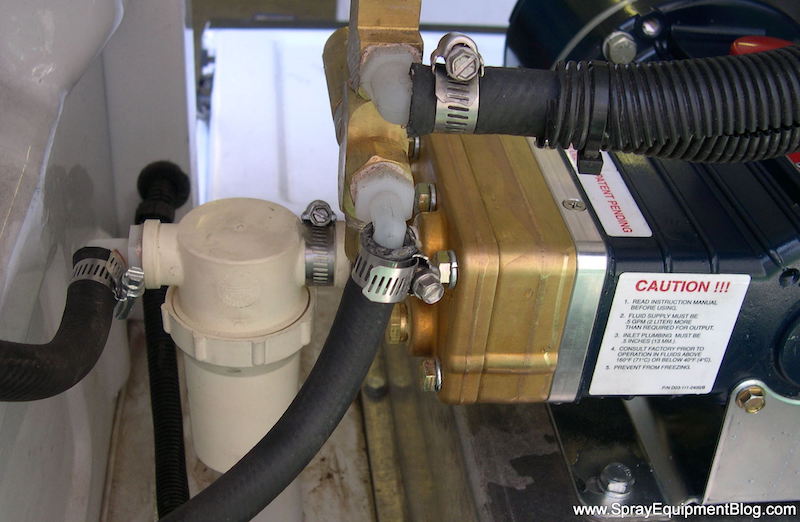Pest Control Equipment Safety - Anticipate Problems
Posted by Andrew Greess on May 15, 2019
Pest Control Equipment Safety - Anticipate Problems
When it comes to your pest control equipment & landscape spray equipment, safety is critical. Safety is not just a good idea, it’s a great investment.
Inattention to safety has huge financial implications: increased expenses (workers comp, spill clean ups, medical bills, lawsuits, repairs, etc.), lost productivity, employee turnover, customer impacts, bad publicity, etc.
When my kids were little, I used to ask them, what's the best way to clean up a mess? By the time they had heard me say this a couple of dozen times, they knew the answer:
The best way to clean up a mess is not to make one in the first place!
The same can be said for pest control sprayer safety. A little attention to detail can prevent some significant safety problems with your landscape spray rig.
The photo below is a great example. The fittings on this pest control sprayer are plastic. What happens to plastic after a season in the sun or cold? In this photo, I am particularly concerned about the plastic fittings that are connecting the filter. The filter must be checked regularly by twisting off the bottom bowl. That torque (twisting) on those cheap plastic fittings is a recipe for disaster:
- Chemical spill
- Downtime
- Technician sprayed with chemical
- Etc.

My point here is that this risk can be easily identified by the technician, supervisor, manager or company owner. Don't live with situation and wait for the problem to occur. It will definitely occur. No one is saving any time or money by ignoring this potential safety issue.
A couple of key safety points:
1. Train technicians to look at their equipment and anticipate problems BEFORE they occur.
2. Managers and supervisors should inspect equipment to likewise anticipate problems.
3. Discuss safety issues at staff meetings. Share ideas. Ask techs for their input.
I hope this helps.
Bonus - here is a prior SprayEquipmentBlog.com post on pest & landscape plumbing fittings:
There are huge variations in quality of clamps and fittings. For example, fittings can be steel, brass, black pipe, PVC, nylon. Fittings are almost never specified when buying a new rig. The wrong fitting in a critical position can be disastrous. A fitting that is too short, thin, or weak can crack under pressure, vibration or torque, resulting in an expensive spill.
Some things to look for:
- Higher pressure systems require sturdier, heavier-duty fittings.
- Fittings attached to valves that are turned or hoses that are pulled need to be heavier-duty to handle the stress.
- Fittings in key or high-risk positions should be heavier-duty to reduce risk. For example, the pickup fitting coming out of the bottom of a tank is critical. If it breaks, the tank will empty.
- Fittings for larger diameter hoses, such as on termite pretreat rigs, should be sturdier and longer to handle the weight of the hose.

